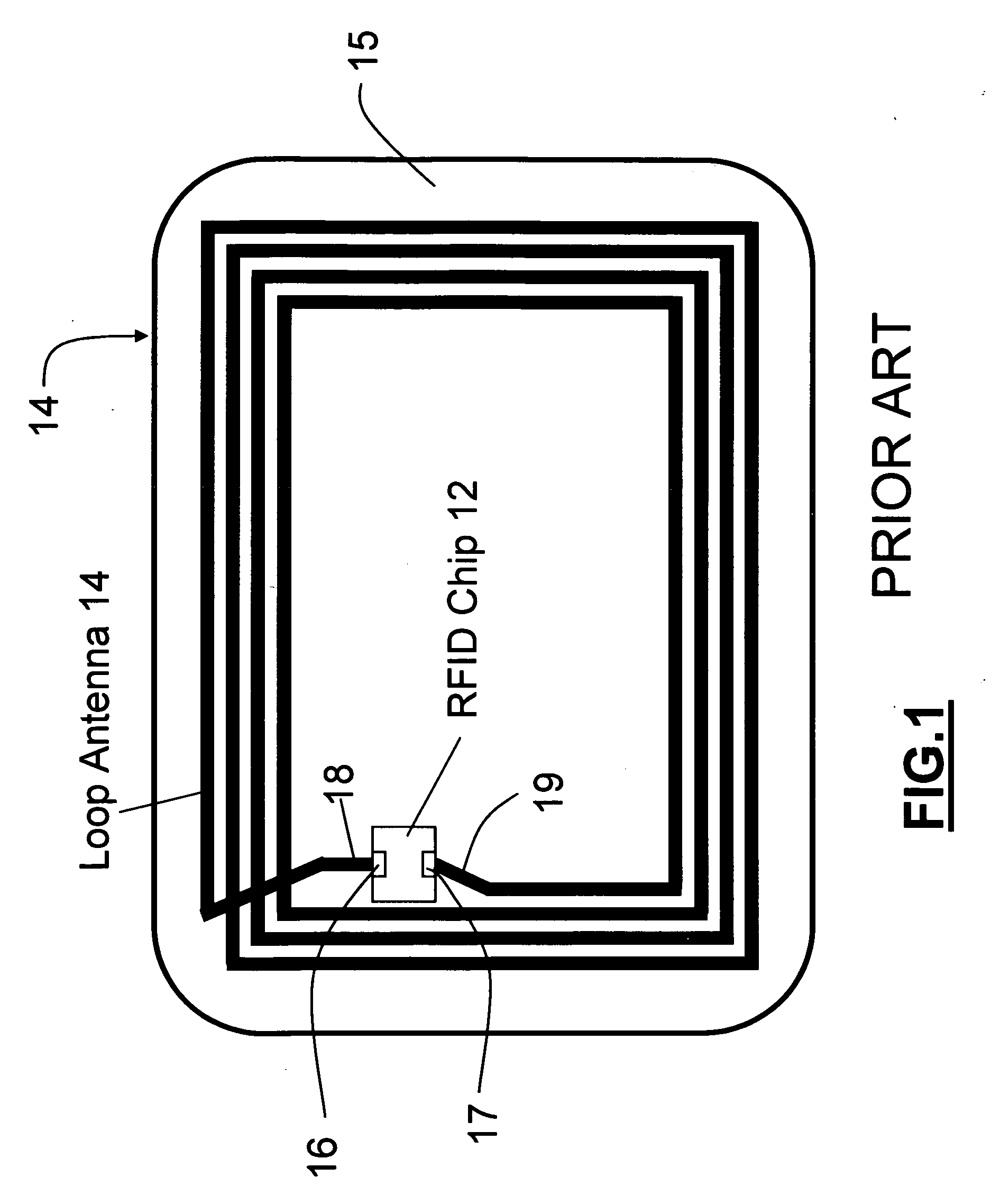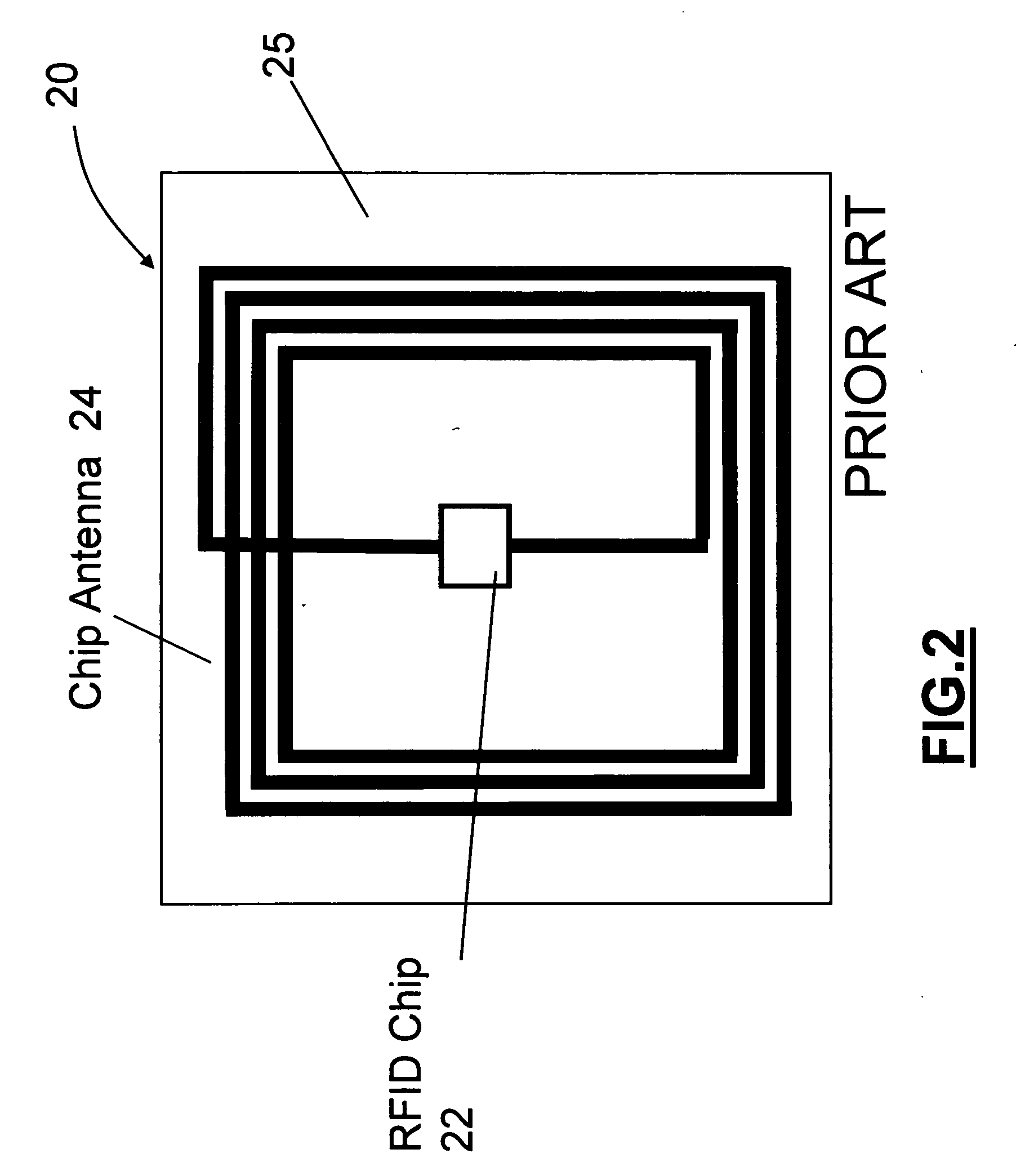RFID tag with improved range
- Summary
- Abstract
- Description
- Claims
- Application Information
AI Technical Summary
Benefits of technology
Problems solved by technology
Method used
Image
Examples
first embodiment
[0036]FIG. 4 illustrates the invention having a single passive antenna circuit 40. As seen in this Fig., passive antenna circuit 40 comprises a multi-turn coil 42 coupled at each end to different plates of a tuning capacitor 44. Coil 42 has an open central portion sufficiently large to accommodate an RFID tag, such as tag 30. Coil 42 may be formed in any desired fashion, such as the silver paste printing or copper deposition techniques noted above. Capacitor 44 may be a discrete component element or an element formed using semiconductor fabrication techniques (deposition, masking, etching, etc.). The value of capacitor 44 must be carefully chosen so that the resonant frequency of passive antenna circuit 40 matches the operating frequency of RFID tag 30. RFID tag 30, antenna 42 and capacitor 44 are preferably mounted on some type of common mounting surface (not shown), which is usually a mounting substrate fabricated from any suitable material. For example, if the FIG. 4 embodiment i...
second embodiment
[0038]FIG. 5 illustrates the invention having two passive antenna circuits. As seen in this Fig., first passive antenna circuit 40 is arranged in an attitude surrounding RFID tag 30 in the same manner depicted in FIG. 4. A second larger passive antenna circuit 50 has a relatively large inductive coil 52 ohmically connected at each end to the plates of a second capacitor 54. The central opening in coil 52 is sufficiently large to accommodate coil 42 of first passive antenna circuit 40. Passive antenna circuit 50 is tuned to the same frequency as first passive antenna circuit 40 by selecting a capacitor 54 of proper value. The structure of antenna 52 and capacitor 54 is essentially the same as coil 42 and capacitor 44, with the exception that the dimensions of coil 52 are substantially larger than those of coil 42.
[0039] Operation of the embodiment of FIG. 5 is similar to that already described for the embodiment of FIG. 4. When an interrogation signal at the operating frequency selec...
PUM
 Login to View More
Login to View More Abstract
Description
Claims
Application Information
 Login to View More
Login to View More - R&D
- Intellectual Property
- Life Sciences
- Materials
- Tech Scout
- Unparalleled Data Quality
- Higher Quality Content
- 60% Fewer Hallucinations
Browse by: Latest US Patents, China's latest patents, Technical Efficacy Thesaurus, Application Domain, Technology Topic, Popular Technical Reports.
© 2025 PatSnap. All rights reserved.Legal|Privacy policy|Modern Slavery Act Transparency Statement|Sitemap|About US| Contact US: help@patsnap.com



